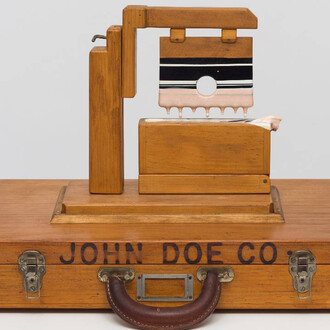I really only love strangeness.
(Philip Guston)
Opening during Zurich Art Weekend 2024, an exhibition of late figurative Philip Guston paintings dated between 1968 and 1979 will be on view at the gallery’s second-floor Limmatstrasse space. Curated in collaboration with Musa Mayer, the artist’s daughter and President of The Guston Foundation, Philip Guston. Singularities presents well-known paintings alongside never-before exhibited works that explore the liberated motifs and instinctual forms that emerged in Guston’s late works as they continued to evolve until his death in 1980.
This exhibition in Zurich follows the major retrospective ‘Philip Guston’ at the Tate Modern, which closed in February 2024.
The strange forms that inhabit the paintings in this exhibition of Guston’s late works are intensely personal, and packed with imagery that haunted the artist throughout his painting life. Yet they also speak to us in a metaphysical language that resists analysis, but that we grasp deeply, intuitively.
When asked, Guston would resist interpretating the iconic symbols that appeared in his paintings. He would respond that he, too, was mystified by these inexplicable forms, these singularities. ‘If I speak of having a subject to paint,’ he wrote, ‘I mean there is a forgotten place of beings and things, which I need to remember. I want to see this place’.
From this forgotten place emerge the artist’s singular responses to the beauty, pain, and cruelty of the world, to the intimacies of his daily life, love, and the passage of time and loss. These works are neither cerebral nor removed; they are timeless. And they feel alive, as if freshly painted. Complex surfaces disclose an exuberant love of the act of painting itself, Guston’s fidelity to an ancient process cultivated over a lifetime of close observation and rigorous interrogation of the art he loved and the necessity of painting.
(Excerpt from Musa Mayer’s guide to the exhibition)
The exhibition opens with Painter’s forms (1972), one of Guston’s masterpieces and according to the art historian Dore Ashton a ‘true distillation of Guston’s late oeuvre into a single painting.’ A few of his most familiar objects spew out of the painter’s mouth against a washed-out pink background: a boot, a bottle, a cigarette, the sole of a shoe, the top of an easel and a nameplate bearing his initials. It is a painting about the act of painting. In many of these enigmatic late works, the distinction between interior and exterior space largely disappears, as domestic elements merge with outdoor scenes. In the allegorical landscapes in which these strange dramas unfold, Guston’s signature cadmium red medium dominates the lower terrain, while the upper sections are a tranquil cloudless blue.
In Feet on rug (1978), two feet are stranded in a barren red landscape against a sky-blue horizon, standing on a rug whose fringes morph into crawling insect legs. The bug-amoeba form is echoed in Future (1978), where it appears to rotate alongside a snail like creature as a despairing human figure sinks into a postapocalyptic ground or sea. In Untitled (1969)—one of the never-before exhibited paintings—an earlier version of this snail form, nautilus-chambered, curls its way into a cozy but colorless domestic interior.
In a 1972 slide talk, Guston told students that when he returned to Italy after first exhibiting his late work, he wanted to see the paintings of the past that he loved. But not for their beauty.
‘I wanted to see early frescoes of Last Judgments and end-of-the-world paintings. Particularly Romanesque paintings and Sienese fresco painters who paint huge, marvelous frescoes of the damned, all the tortures in hell, and so on. Heaven is always very dull, just a lot of people lined up. Like trumpets, they’re all lined up. There’s not much to look at. But when they’re going to hell the painter really goes to town. All kinds of marvelous stuff. That’s when they really enjoyed painting. I feel we live in comparable times. Oh yeah, and I want to paint that. I don’t want to copy, but I feel that’s the big subject matter. I don’t know how it’s going to come out. Well, I’ve begun. I’ve begun with this story’.
Door and room (1978), on view for the first time, suggests a story of forced entry into the artist’s studio. The realities of the world intrude into his sanctuary, leaving the artist as witness to perpetual acts of war. The red and black scene is relieved only by the narrow strip of blue at the top, like a slight breath of air or a hope for peace. Yet in the bloody field of combat are unmistakable signs of a painterly, exuberant celebration of dynamic form and color.
A demonstration of Guston’s ability to introspectively capture the struggles of his time with meticulous composition and nuanced detail is Agean (Aegean) (1978). In this large painting, the convergence of outstretched hands, arms and shields in the form of trash can lids recalls his early work from the ‘40s, in which he depicted childhood street fights that mimicked the theatrics of warfare. But these games are clearly more than child’s play; they are precursors of war. The late Guston addresses the inherent nature of violence as it manifested in the political turmoil of his era, evoking the Holocaust, the Vietnam War and the civil unrest that permeated the late 1960s. Expanding on this theme, Guston’s Untitled (1979)—made in the last year of his life—can also be understood as an allegory of human struggle. Shields float in the void, creating a bizarre scene that oscillates between violence and humor. Guston said, ‘I wanted to include everything. I felt, like everybody, disturbed about everything to such an extent that I didn’t want to exclude it from the studio, from what I did. Paint it. I didn’t think I was illustrating anything’.
Philip Guston’s late paintings retain a mysterious quality and all are driven by the artist’s desire to tell stories that not only reflect his state of mind but also provide insights into the social and political climate of his time. When seen together, they show the singular depth and complexity of his rich personal iconography.









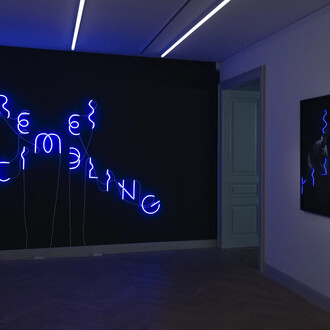

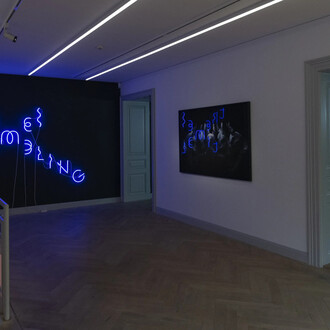
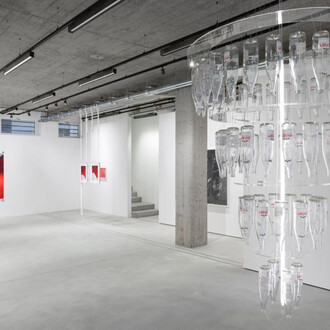

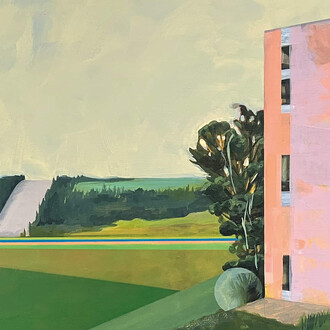
![Karel Appel, Le coq furieux [The furious rooster] (detail), 1952. Courtesy of Kunstmuseum Bern](http://media.meer.com/attachments/de322f88933729d2014dc4e021d4a6694046a744/store/fill/330/330/c26a6c5ef5e2ed397d4a2e9bc00ac739c40ba8384f45f9ce1ed85adba600/Karel-Appel-Le-coq-furieux-The-furious-rooster-detail-1952-Courtesy-of-Kunstmuseum-Bern.jpg)
